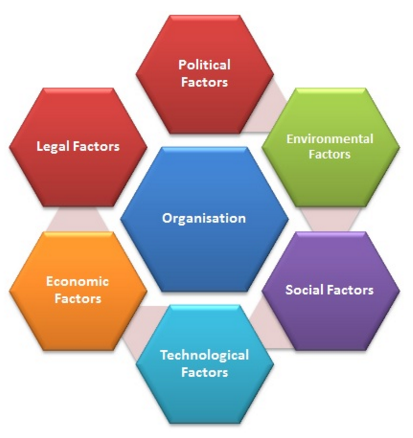PESTEL Analysis
PESTEL is a strategic analytical tool used to assess external factors affecting businesses. PESTEL acronym stands for political, economic, social, technological, environmental and legal factors impacting companies. PESTEL has recently evolved from PEST analysis once intensifying forces of globalization and intensifying forces of competition in the marketplace coupled with other set of factors increased the importance and potential impact of environmental and legal factors on businesses.
The majority of resources explain the application of PESTEL assuming their audience is business owners. This article adopts an alternative approach and below is the explanation of the framework for business students who have been assigned by their educational institution to conduct PESTEL analysis.
Application of PESTEL as a part of your assignment can be facilitated via the following steps:
Step 1: Data Collection
If you have a choice, you should select a multinational corporation as a case study company to conduct PESTEL analysis due to the availability of relevant data about famous multinational enterprises. Company annual report along with official website of the company is the most comprehensive source of data needed to conduct PESTEL analysis. Additionally, you can purchase a company report on this portal. The portal offers reports about the most famous multinational enterprises and repots contain PESTEL analysis of respective companies. Online versions of the most popular business journals and magazines such as Wall Street Journal, The Economist and Inc. are also effective sources data to be used for your analysis.
Step 2: Deciding which factors to discuss
There is a vast range of political, economic, social, technological, environmental and legal factors that effect the company you have chosen as a case study. You do not have the space to discuss all of these factors in your paper; therefore, you will have to choose the most significant factors for your analysis. Unfortunately, there is no general rule or a universal recipe as to what factors to discuss.
The table below illustrates the most significant factors that affect business organizations listed in order of importance:
| Political
1. Government stability 2. Level of bureaucracy 3. Extent of corruption 4. The freedom of press 5. Home market lobbying and import restrictions 6. Tax policies 7. Trade control 8. Tariffs 9. Activities of trade unions
|
Economic
1. Macroeconomic climate in the country 2. Inflation rate 3. Interest rate 4. Currency exchange rate 5. Tax rates 6. Rate of unemployment 7. Cost of labor 8. Availability of credit 9. Changes in disposable income of consumers 10. Government’s monetary and fiscal policies |
| Social
1. Changing family values 2. Childless families 3. Same sex marriages 4. Aging population 5. Population growth rate 6. Health-consciousness of population 7. Level of education 8. Consumer attitude towards imported products and services 9. Changes in consumer purchasing habits 10. Impact of religion and beliefs |
Technological
1. Industry-specific technological innovations 2. Increasing popularity of e-commerce 3. Increasing integration of IT and internet into business processes 4. Changes in technological infrastructure 5. Rate of technological change 6. Changes in communication infrastructure
|
| Environmental
1. Increasing media coverage of environmental issues 2. Climate change 3. Global warming 4. Environmental pollution 5. Impact of activities of non-government environmental organizations 6. Ozone de-layering 7. Consumer attitudes towards ‘green’ products |
Legal
1. Trade regulation/de-regulation 2. Regulation of competition 3. Anti-trust rules and regulations 4. Discrimination law 5. Copyrights, patents and intellectual property law 6. Data protection law 7. Employee health and safety rules and regulations |
It is important to note that although in the table above factors affecting businesses are listed in order of importance, the patterns of data collected during the previous step may indicate that certain factors have the most significant impact compared to other factors on your chosen company for each category of factors. Your task is to determine specific factors under each category that proved to have the biggest impact on the business, appreciate the nature of the impact and understand the consequences.
Step 3: Writing
Depending on the total word count requirement specified in your assignment instructions, you will need to discuss about 4-5 factors under each category. The knowledge about the total word count requirement is important in a way that you need to discuss each category of factors and each specific factor with more or less equal numbers of words. One of the common and effective ways of conducting PESTEL analysis is to present the list of factors with the most significant impact on the form of table, similar to the table above, followed by discussion of each individual factor listed in the table.
To assist with your assignment, you can find samples of PESTEL analysis here.

